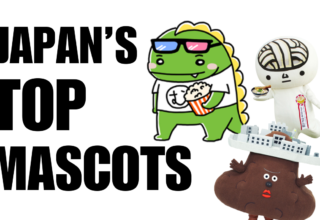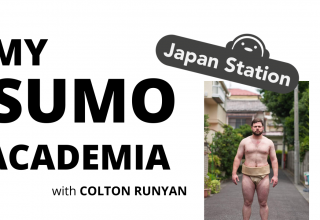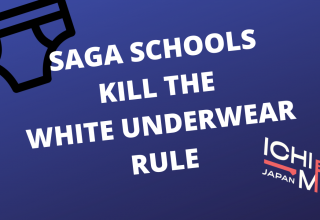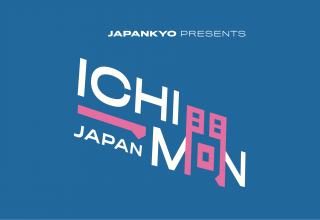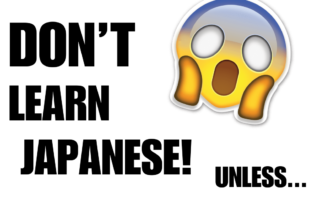
If you’re afraid of giant origami cranes, this article is not for you.
Much like in other countries, sports teams in Japan have mascots. Although most of these mascots tend to be cute characters based on animals, sometimes, such as in the case of a Japanese baseball team mascot named Mr. Black Eagle, they can be the opposite of cute, and other times, such as in the case of a new Japanese soccer team mascot, they can be quite… geometric… and paper-ey
Yes, what you just saw in the video above is exactly what it looks like, a soccer team mascot that is modeled after an origami crane using its human legs to waddle onto a soccer field and then sit down in the middle of the field on a cushion. The name of this ridiculous but strangely endearing mascot is Kizūru (キヅール), and the story of how he? she? it? (let’s go with “it”) came to be is a pretty interesting one.
The Birth of Kizūru
The story of Kizūru begins in March of this year when Grulla Morioka (Grulla is pronounced gruja), a soccer team from Iwate Prefecture belonging to the third division of professional Japanese soccer, a.k.a. the J3 League, decided that they needed a mascot. However, rather than simply coming up with a mascot all on their own, they went to their fans.
Kizūru concept design

Grulla came up with four different mascot designs (to see them click here) and let fans vote in order to determine which one would become the team’s first ever mascot. Being that the team’s emblem and name (Grulla means crane in Spanish) all take their inspiration from the crane themed family crest (kamon) of the Nanbu clan, a samurai clan that ruled over Iwate and much of Northeastern Japan for over 700 years, all four designs were crane themed as well.
The Nanbu family crest, which has on it the mukai-zuru design (two cranes facing each other) that the Grulla emblem is based on

Screenshot of the official Grulla Morioka website. The team’s emblem can be seen on the left.
Within the four options that Grulla put up for vote was Kizūru. Whereas the other three candidates were rather unremarkable in appearance, Kizūru, with its sharp angles and smooth surfaces, really stood out. And it seems like it was this departure from the “round” and “fluffy” designs of most other mascots that led to Kizūru coming out on top.
After Kizūru’s landslide victory in July, Grulla began work on bringing Kizūru to life in the form of a kigurumi (a costume). Unfortunately though, that same striking and unique design that drew fans to Kizūru in the first place, also meant that creating a Kizūru costume would be far more expensive than creating a costume for a character with a more traditional look. Satoshi Miyano, the man overseeing the Kizūru project, was quoted as saying “It costs about 1,000,000 yen (8,810 USD) to 1,200,000 yen (10,572 USD) to create a costume for a character [with a more traditional design] like Kumamon. However, in the case of Kizūru we were told it would cost 2,800,000 yen (24,668 USD).” Being a third division soccer team, Grulla did not have the extra money in their budget though, so they once again went to their fans.
In hopes of raising the money that they needed to create Kizūru, Grulla started a crowdfunding campaign on the Japanese crowdfunding website Campfire. Amazingly, in the span of just a single month, the campaign managed to bring in a whopping 5,005,456 yen (44,098 USD) which was pretty close to double the campaign’s goal of 2,926,000 yen (25,953 USD).
Interestingly, a total of 1,069 individuals contributed to the Kizūru cause and of these only 10 percent were from Iwate. The rest were from all over Japan and spanned 44 of Japan’s 47 prefectures which given Grulla’s status as a relatively unknown J3 soccer team, is a truly remarkable accomplishment.
Kizūru’s Big Debut
Kizūru made its debut on October 15 at Grulla’s home, Iwagin Stadium in Iwate. On this day the people who had come to watch a game between Grulla Morioka and FC Ryukyu were treated to a very unique spectacle when Kizūru stepped onto the field for the very first time (a video of this moment can be found at the top of this article).
Although the game ended in a 0 to 0 draw, the people in attendance did get to see someone score a goal because after entering the field and briefly taking a seat (more on that shortly), Kizūru was given a soccer ball so that the origami bird could show off its “pretty good” soccer skills. Watch Kizūru single-wingedly take on a total of 10 soccer players, score a goal and then do its trademark celebration dance which takes its name from the Japanese fairy tale Tsuru no Ongaeshi (The Crane’s Return of a Favor) in the two videos below.
Don’t get in Kizūru’s way!
㊗️キヅールお披露目㊗️ pic.twitter.com/DDdO2IrzLH
— は る な (@soc16cer19) October 15, 2017
Check out Kizūru’s amazing soccer skills from a different angle.
Aside from being a skilled soccer player, Kizūru is also a fan of the Japanese form of live comedy known as rakugo. In rakugo a comedian tells humorous stories while sitting on a zabuton, a type of cushion used when sitting on the floor, especially when sitting in the formal seiza style. Although Kizūru does not speak, Kizūru did sit on a zabuton after making its entrance onto the field.
Kizūru sitting in seiza shortly before scoring the only goal of the day.
正座
そしてグルージャ盛岡ゴール裏へ向きます #キヅール #コミュサカ pic.twitter.com/iylaKCbiLo— とかいな暮らし@ほぼJリーグ実況アカ (@tokainakurasi) October 15, 2017
Thanks to the internet and social media what began as something the Grulla staff thought would just be for their fans, has turned into something much larger. Aside from having fans all across Japan, Kizūru has also managed to get fans in foreign countries like China, where supporters of a Chinese soccer player that is part of the Grulla Morioka roster have helped spread the word about this giant paper bird.
Here’s Kizūru “participating” in a game of tug-of-war.
【第34節vs福島ユナイテッドFC】
続いて綱引き😆
皆さんが気になる「どうやって綱を引くのか」というキヅールなりの判断は、、、🤭 (※本人は一切ふざけてるつもりはなく、真剣です。)#グルージャ盛岡 #一岩 pic.twitter.com/TDOzn6I9jE— グルージャ盛岡【公式】 (@grulla_staff) 2017年12月3日
Since Kizūru’s big debut in October, this new fan favorite mascot has been making regular appearances both at Grulla’s games and other promotional events including one in Tokyo’s trendy Shibuya district. As for Kizūru’s next big event, that is slated for February of 2018 when the giant paper bird will participate in a J League mascot vote to determine the most popular mascot in Japan’s professional soccer league. Good luck Kizūru!
Kizūru is such a good dancer!
【ホーム最終戦ハイライト🎥】
続いてハーフタイムに行なったオフィシャル応援マネージャー「B-fam(@b_fam_STAFF )」と一緒にパフォーマンスをするキヅール👀割と何でもできる鶴なんですよねー🤣 #グルージャ盛岡 #一岩 pic.twitter.com/5c9wcNdmyF— グルージャ盛岡【公式】 (@grulla_staff) November 30, 2017
Kizūru (キヅール) Profile
Name origin
– Based on the Japanese word for origami crane: orizuru (折鶴).
– Ori refers to the act of folding, while zuru is derived from the Japanese word for “crane” (tsuru, 鶴)
– When written/pronounced in Japanese, Kizūru features an elongated “u” sound (kizoo-ru). This was done to make Kizūru’s name more cute and mascot-like.
– The “ki” in Kizūru is derived from the kanji character for “prayer” (祈). This choice in naming is meant to show that Kizūru is the recipient of the “prayers for victory” of the Grulla players. It also signifies Grulla’s desire that Kizūru be loved not just by its fans but by people all over the world.
Dimensions
Height: Approximately 2.4 meters (6.6 ft)
Wingspan: Approximately 3 meters (9.8 ft)
About
– Although Kizūru is an origami crane, Kizūru has a strong spirit that does not bend (yes, that’s a pun).
– Kizūru is pretty good at soccer.
– Kizūru likes rakugo.
– Kizūru’s favorite celebrities are Tsurube and Nikaku (both are well-known Japanese entertainers that use the kanji character for “crane” in their names)
– Kizūru is good at doing the “Tsuru no Ongaeshi” (The Crane’s Return of a Favor) dance.
– Because Kizūru is the recipient of Grulla’s soccer players’ prayers for victory, Kizūru sometimes gets a little carried away/coky.
Source: Grulla Morioka Official Press Release, Kahoku Shinbun, NetLab, Yahoo News Japan
Featured image: Grulla Morioka Official Twitter @grulla_staff
Kizuru concept design: Grulla Morioka Official Press Release

